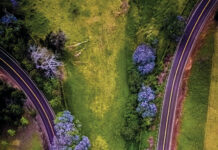Story by Teya Penniman | Photography by Zach Pezzillo
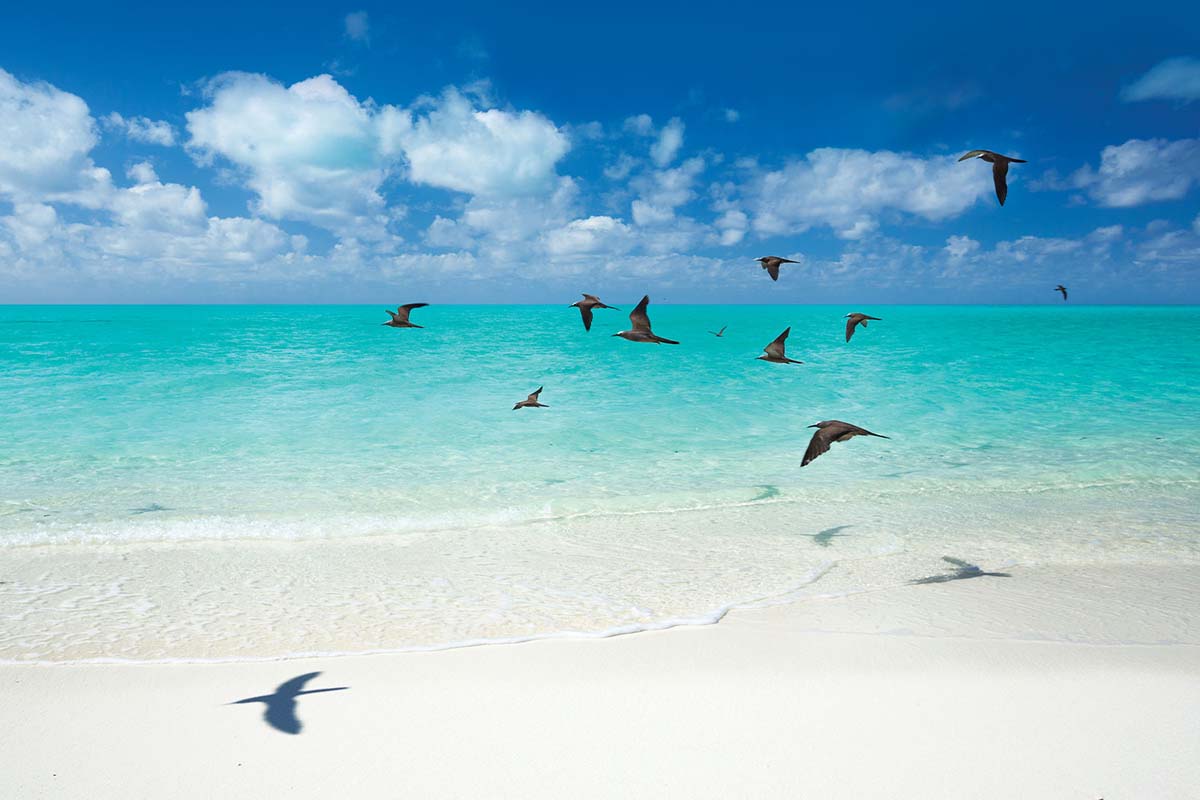
For many people — tourists and residents alike — the map of Hawai‘i runs from Kaua‘i to the southernmost end of Hawai‘i Island, aka Moku o Keawe. Recent spectacular eruptions remind us that the birth of each island occurs over a hot spot deep below the surface of the sea. Oft forgotten, however, is the string of islands, atolls and shoals that are slowly, inexorably, being shuttled northwestward from their place of origin by the steady creep of the Pacific plate. While the youngest and highest still straddle the stationary hot spot, older rocks ride the plate toward an imminent watery abyss.
The movement of our remote archipelago — rising, sliding and sinking — has been on auto-play for millennia. Kure Atoll, at the farthest end of the Northwestern Hawaiian Islands (NWHI), once stood tall and proud. Now, at the distinguished age of 29 million years, its highest point rises a scant 20 feet above sea level. Beyond the atolls to the north lie the Emperor Seamounts, whose inevitable journey back to the center of the earth began some 81 million years ago.
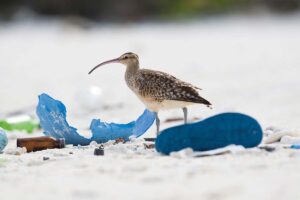
The Western theory of plate tectonics was first posited in the early 1960s to explain the volcanic origins of the archipelago, but ancient Hawaiians had a narrative for its birth long before. In the Kumulipo, the Hawaiian creation chant, a coral polyp is the first life to emerge from the slimy darkness, explaining its role in the formation and function of modern-day marine ecosystems. The story of the goddess Pele captures the chronology and origin of the Islands: Pele worked her way down the chain from Ni‘ihau to Maui, searching for an island to call home. Each time she dug a fire pit, seawater extinguished the flames, until she reached Hawai‘i Island, where her fire still burns today.
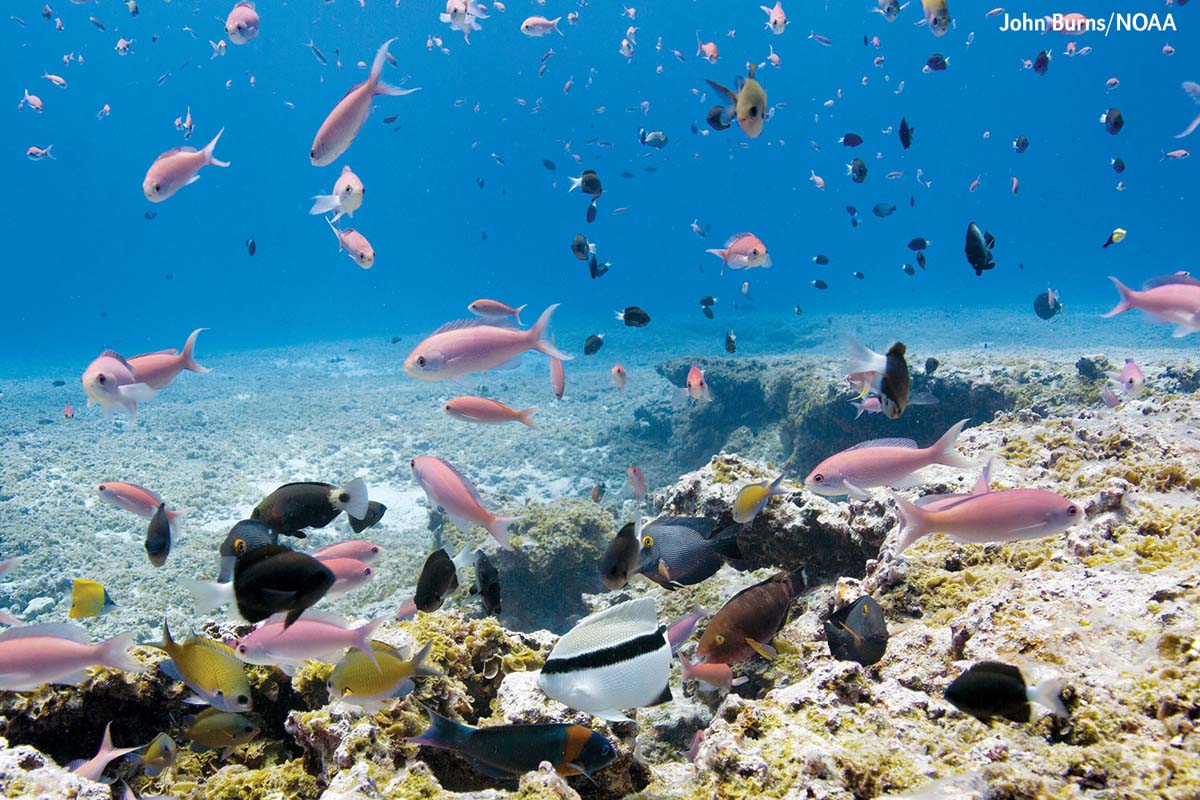
These kūpuna (ancestor) islands now form the core of the Papahānaumokuākea Marine National Monument, a designation given by President Bush in 2006 that highlighted the importance of protecting its biological diversity and cultural significance. A decade later, President Obama nearly doubled the protected area to cover more than 582,000 square miles of the Pacific Ocean, making it one of the largest marine preserves in the world. During the process of designating the area as a sanctuary, a cultural group worked to find a name that would honor the genealogy and formation of the islands: Papahānaumokuākea, a title that speaks of a fertile woman giving birth to a stretch of islands beneath a benevolent sky.
These islands have long held cultural and spiritual significance for Native Hawaiians, who visited and used them for thousands of years before the first Westerners came ashore. They are considered sacred — a place of primordial darkness from which life springs, and to which spirits return after death. Hawaiians continue to maintain strong ties to the NWHI, making regular visits to the more accessible atolls to perpetuate traditional knowledge and protect the terrestrial and marine environments.
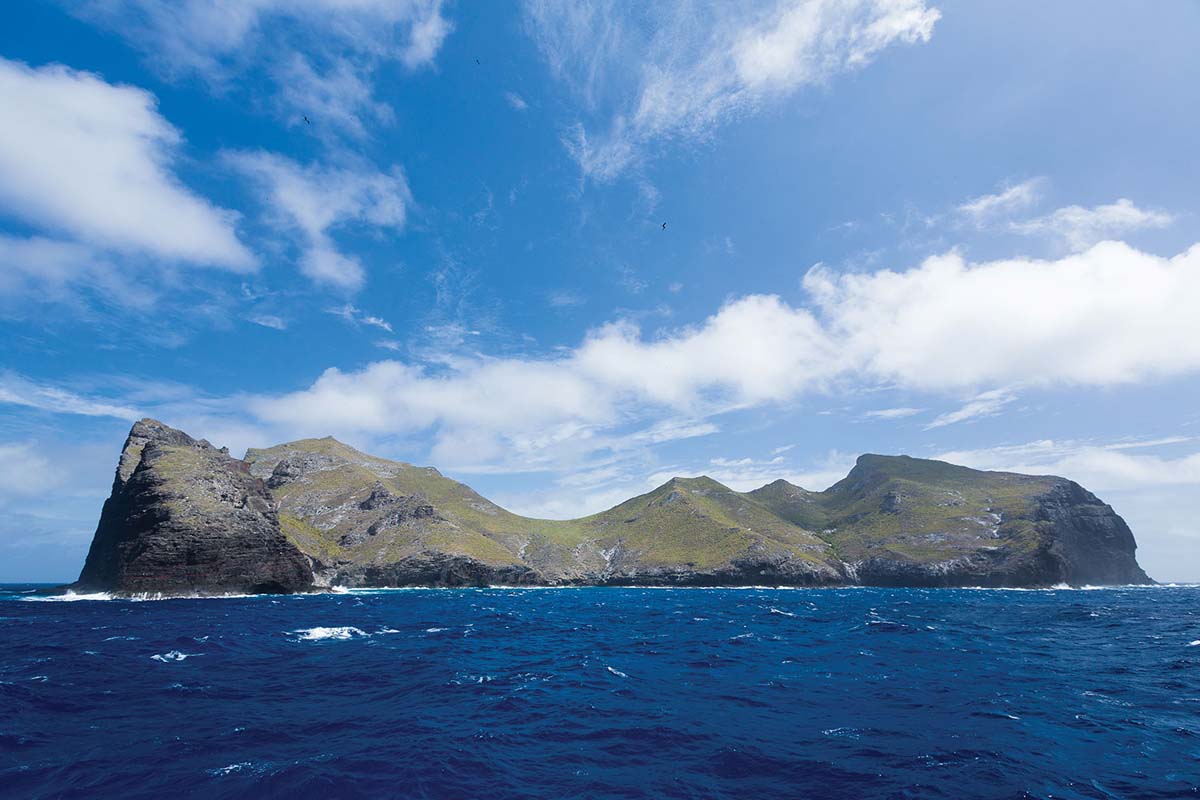
The 10 main atolls and their surrounding waters deserve our respect and care, and not just because they are senior citizens. These were the birthing grounds of the plants and animals that now give life to our reefs, beaches, forests and mountains. As each new island rose from the sea, species from the older islands made their way via wind, wing and wave to the emerging rocks, setting down roots, creating soil and giving nutrients to emerging reef systems. Over time, the isolation yet relative proximity of the islands to one another fostered the development of unrivaled biodiversity, and today more than 10,000 Hawaiian species found here exist nowhere else in the world. Maui may be a youthful 1 million years old, but the ancestors of its honeycreepers date back about 7 million years.
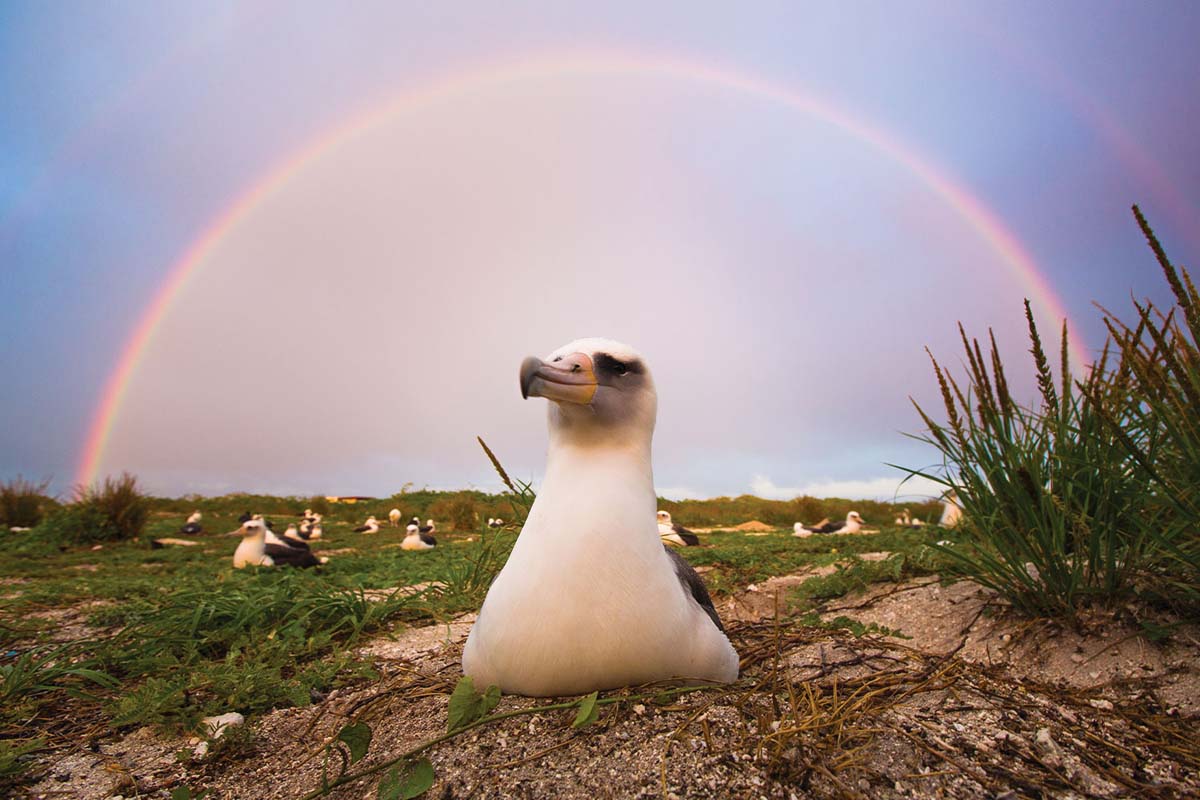
The NWHI serve as nursery grounds for rare birds, sea turtles and monk seals. Millions of seabirds fill the skies above the atolls of Kure, Midway, Laysan, Lisianski, and Pearl and Hermes. One individual bird seems to embody the islands’ inherent polarity of age and youth: Wisdom, a 70-year old mōlī (Laysan albatross) and the oldest known wild bird on the planet, returned to Midway Atoll in December, 2021, for yet another round of egg-laying, incubation and chick-rearing. As rising seas hasten the disappearance of the albatrosses’ nesting areas, finding and protecting suitable breeding grounds on higher, younger islands helps ensure these majestic birds will continue to soar across the waves.
It might take 200,000 years before the newly forming island of Kama‘ehuakanaloa breaks the surface just south of Moku o Keawe. Maui will be further along on its subductive journey back to the depths. But the appearance of the new volcano might be seen by an albatross searching for a nesting spot — evidence that it’s not too late to take care of our kūpuna.
papahanaumokuakea.gov | IG @ papahanaumokuakea.hawaii | FB @ papahanaumokuakea
In 2008, the Hawaiian Outrigger Canoe Voyaging Society paddled the entire 1,650-mile archipelago in a six-man outrigger canoe. Go to mauimagazine.net/straight-til-friday and mauimagazine.net/voyage-to-hawaiian-islands/ to read about their inspiring journey.



